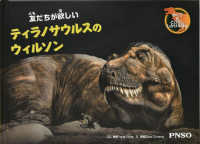Full Description
This book provides an introduction to the role of children's temperament (i.e. the individual's characteristics), parents, teachers, and peers in influencing the behaviour or action of children in particular in the classroom. The author hopes that this research will help adults, specifically classroom teachers, responsible for the development of children between the ages of 3 and 8 years, to make sense of children's disruptive behaviours, otherwise referred to as problem behaviours. Sometimes, students' sense of indignation and outrage may be a reaction to their environment; most times, they react to the negative environment they are situated in at home, on the playfield, or in the classroom. For some students, it is the lack of understanding of how to control the negative reactions of their temperament that causes a consistent display of disruptive behaviours. Many of these children with problem behaviours have few friends or are from homes pierced with the knife of poverty. Students' behaviour at school may mirror their relationship with parents and other family members at home; it may be a cry for help. I hope that the information in this publication will bring understanding and care for children by adults. Our role as adults is to help children manage the negative reaction of their temperament, not to treat them with disdain nor as evildoers; they are our adults for tomorrow.
A Child at a Time is a call to educators, parents, and possible policymakers to recognize that children's differences should not be taken for granted, especially in the early stages of their development. The book emphasizes differences in children's characters and socio-emotional needs and how these differences influence how children respond to teachers' and parents' behavioural management strategies.
Contents
Preface
Acknowledgement
Introduction
Defining Acronyms
Temperamental Differences
Chapter 2
Understanding Parents' Interactions with Their children
Chapter 3
School Factors and Temperament
Chapter 4
Fostering Development of Jamaican Children
Chapter 5
Teachers' assessment of a Sample of Jamaican Children's Temperament
Results and Discussion<
Chapter 6
INSIGHTS into Children's Temperament Programme
Assessment of the INSIGHTS Programme
Chapter 7
The Influence of INSIGHTS on Parenting Practice
Chapter 8
The Influence of INSIGHTS on Teaching Practices
Teachers' Recommendation for the INSIGHTS Programme
Chapter 9
Facilitating Differences in Children's Development
References








